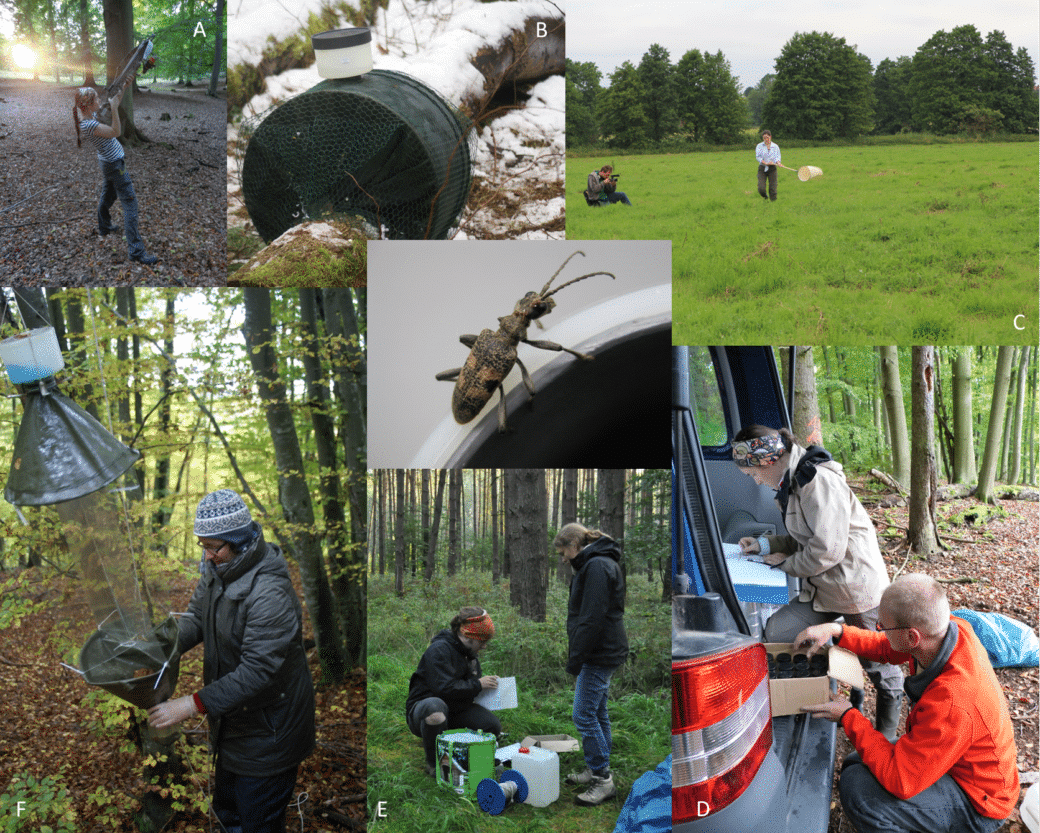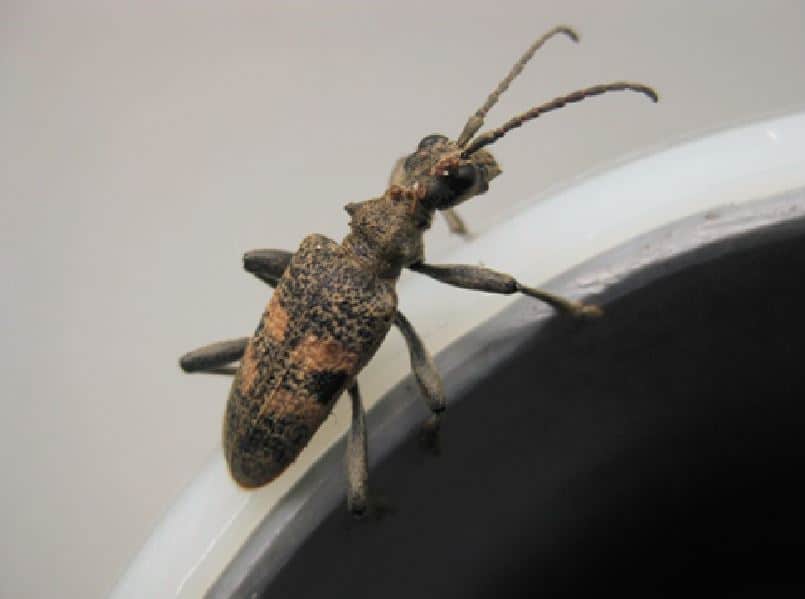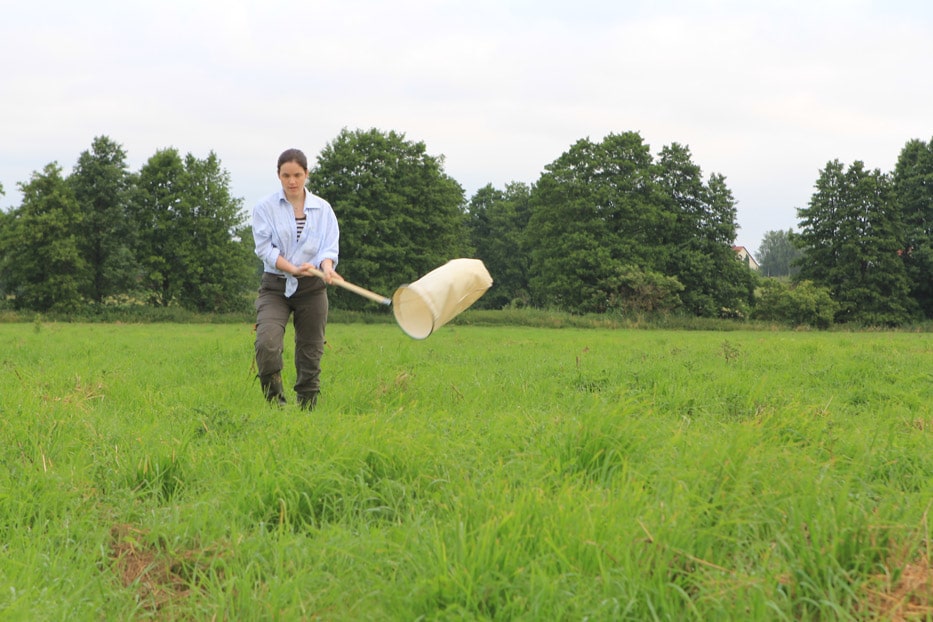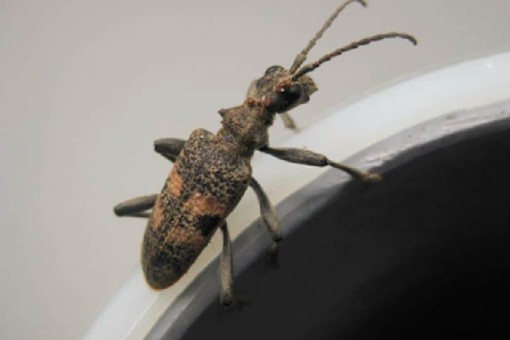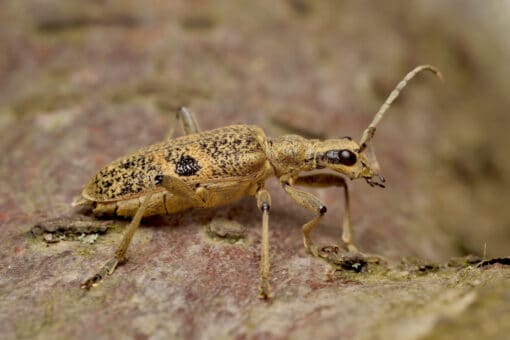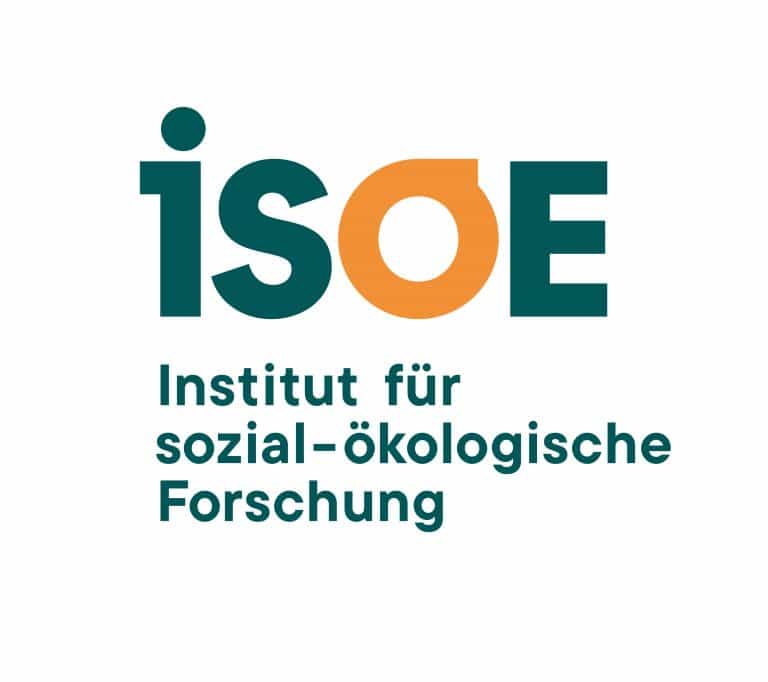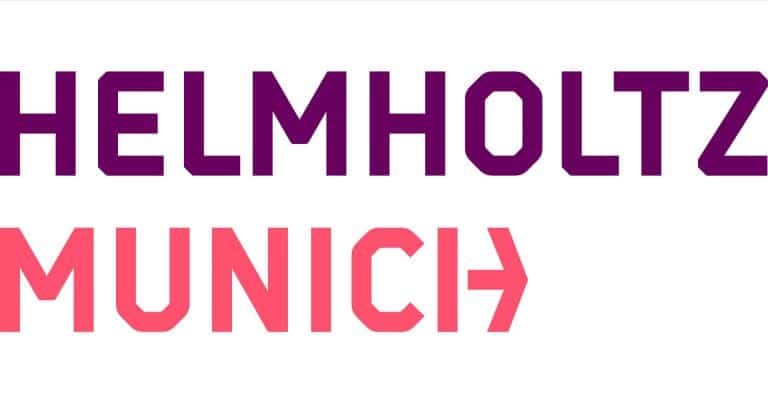Land use, above-ground arthropod diversity and arthropod-affected processes
Arthropods, especially insects, are the most diverse group of animals on earth and influence many ecosystem processes. Within the project Arthropods:
1) a long-term monitoring of insect and spider diversity is conducted in grasslands and forests;
2) ecosystem processes, e.g. herbivory, predation and parasitization are quantified;
3) and the role of deadwood insects in the decomposition of deadwood is analyzed as part of the BELongDead-experiment.
4) ecosystem processes like herbivory, predation, parasitisation and pollination are quantified.
Arthropods are sampled in forests and grasslands during the whole vegetation period (March-October) as part of the long-term monitoring. Through this monitoring, we can quantify not only short-term but also long-term effects of land use on arthropod diversity in grasslands and forests. Additionally, important basic information is supplied for other projects. In addition to the long-term monitoring, the use of indicator species is tested and ecological information (traits) of the sampled species are collected to test the effect of land use on the community composition and to understand the underlying processes of land-use effects. In various collaborations with other projects, we analyze the phylogenetic diversity of arthropods, the effect of the surrounding landscape and of historic land use and develop a BarCoding approach for the rapid assessment of Diptera species.
Hypotheses
1) Increasing land-use intensity leads to a decrease in diversity and overall abundance of arthropods in forests and grasslands.
2) The arthropod community composition changes with intensive land use, as species with certain characteristics become more abundant or rare.
Methods
Actively flying arthropods are sampled in forests with flight-interception traps within the understory and in the canopy of trees.
In grasslands, ground-living arthropods and species which are found in the vegetation layer are caught by monthly sweep-net sampling
We evaluate the impact of land use on the ecosystem processes herbivory, predation and parasitization. We test experimentally, if an increase in diversity within extensively used systems reduces herbivory on leaves and if the herbivore populations are controlled effectively. In forests, herbivory is quantified within the rejuvenation and on sun-exposed crowns of beech, which is the dominant tree species within the exploratories. In grasslands, herbivory is quantified for the community as well as for selected plant species. Through the joined analysis of data from the long-term monitoring and the ecosystem process assessment, we are able to detect relationships between land use, arthropod communities and connected processes.
Hypotheses
1) Changes in arthropod community composition affect ecosystem processes (e.g. herbivory) and the diversity of other taxa. The diversity and abundance of natural enemies of arthropod herbivores is higher in natural forests as well as under extensive land use in grasslands compared to managed forests or intensively used grasslands.
2) Parasitization rates and predation is higher in natural forests as well as under extensive land use in grasslands.
3) Herbivore abundance is lower in natural forests as well as under extensive land use in grasslands, due to the stronger control by natural enemies.
4) Hence, damage caused by herbivores is lower in natural forests as well as under extensive land use in grasslands.
Methods
Herbivory is quantified for different damage types, such as galls, mines, sucking-, scraping- and chewing damage. Predation is quantified through a three-day exposure of mealworms and artificial caterpillars made from modeling clay and a following determination of predation traces. Parasitization is evaluated through emergence traps on selected species, e.g. on the bark beetle species Trypodendron domesticum and on the beech leaf mining beetle Rhynchaenius fagi. Pollination is recorded by bumblebee footprints on Lotus corniculatus.
Within the BELongDead experiment deadwood logs (length 4m, diameter ca. 30cm) of 13 tree species were exposed on a total of 30 plots. Since 2010, the emerging insects from those logs are caught with closed emergence traps. This allows us to analyze the role of forest management and tree species on the colonization by deadwood insects. Additionally, we evaluate the role of deadwood insects in the decomposition of the logs in collaboration with other projects.
Hypotheses
1) The community of deadwood insects differs in its diversity and composition between logs of different tree species.
2) The diversity of the deadwood insect community is higher on native tree species compared to ‘exotic’ tree species.
3) The diversity of the deadwood insect community is higher in natural forests compared to managed forests.
4) The composition of the deadwood insect community changes during the course of the deadwood decomposition process.
5) Abundance and diversity of deadwood insects influence the decomposition rate positively.
Methods
One emergence trap (half round metal arch with dark cloth attached to its sides, see picture B) was installed on one log per tree species in 2010. The emergence traps are equipped with transparent sampling jars, in which the freshly emerged deadwood insects are caught. At the end of each year, the emergence traps are moved by 30cm on the log to enable new colonization at the old position of the emergence trap.
